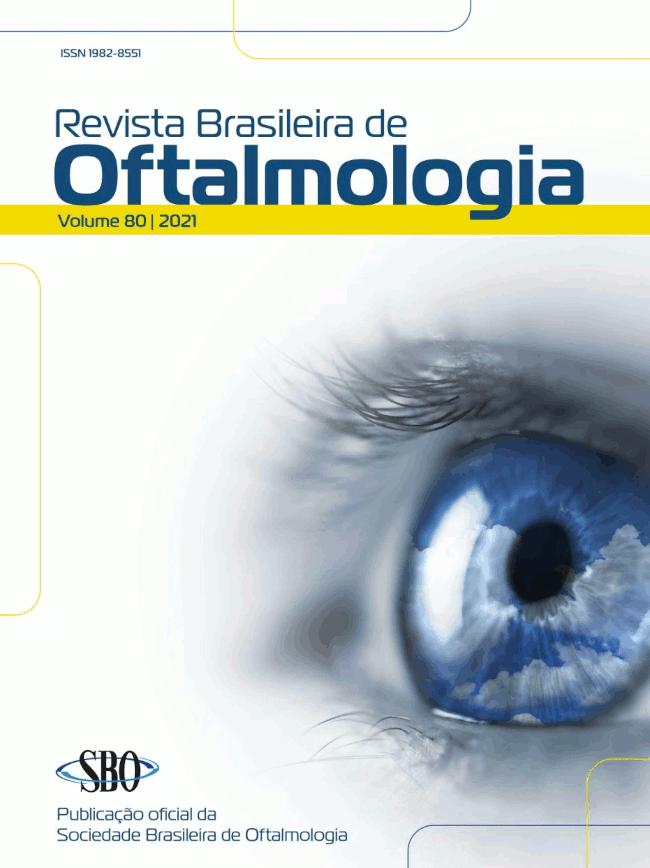Resumo em Português:
RESUMO Objetivo Analisar a eficácia e a estabilidade a curto, médio e longo prazo em 46 olhos com ceratocone, operados com segmentos de anel intrastromal corneano de Ferrara. Métodos A meta primária foi a ceratometria média de poder refrativo total da córnea. Também estudamos os efeitos da idade, grau de ceratocone e fenótipo clínico nos resultados, bem como as seguintes variações de ceratometria e variações de aberrometria: mais plana, mais curva, média, máxima, astigmatismo, raiz quadrada média da aberração comática primária e raiz quadrada média da aberração comática secundária. Resultados A redução pós-operatória imediata da ceratometria média do poder refrativo total da córnea foi de 3,08±1,51 dioptrias (D) (p<0,001). Aos 4 anos, a ceratometria média do poder refrativo total da córnea aumentou para 0,57±0,96D (p=0,005). Entre 4 e 7 anos, não houve mudança na ceratometria média da potência refrativa total da córnea (p=0,727). O grau de ceratocone foi um fator que afetou a eficácia dos segmentos do anel intrastromal da córnea, alcançando um efeito maior naqueles com maior grau de ceratocone (p=0,012 entre grupos). A redução pós-operatória imediata foi de 1,77±1,88D para a mais plana, 3,91±2,30D para a mais curva, 2,76±1,63D para a média, 4,42±3,26D para a máxima, 2,15±2,68D para o astigmatismo, 1,03±0,83µm para a raiz quadrada média da aberração comática primária e raiz quadrada média da aberração comática secundária (p<0,001 em todos os casos). Aos 4 anos, a maioria das curvas aumentou 0,42±0,78D (p=0,001), a média aumentou 0,54±0,64 (p<0,001) e a raiz quadrada média da aberração comática primária diminuiu 0,14±0,27µm (p=0,020). Conclusão O implante de anel intrastromal corneano Ferrara é um tratamento eficaz e estável a longo prazo para pacientes com ceratocone. Há, no entanto, uma regressão parcial a médio prazo.
Resumo em Inglês:
ABSTRACT Objective To analyze the short, medium and long-term efficacy and stability in 46 eyes with keratoconus, operated with Ferrara intrastromal corneal ring segments. Methods The primary endpoint was the mean keratometry of total corneal refractive power. We also studied the effects of age, degree of keratoconus and clinical phenotype on the results, as well as the following keratometry variations and aberrometry variations: flattest, most curved, mean, maximum, astigmatism, root mean square of primary coma aberration and root mean square of secondary coma aberration. Results The immediate postoperative reduction in mean keratometry of total corneal refractive power was 3.08±1.51 diopters (D) (p<0.001). At 4 years, the mean keratometry of total corneal refractive power increased to 0.57±0.96D (p=0.005). Between 4 and 7 years, there was no change in mean keratometry of total corneal refractive power (p=0.727). The degree of keratoconus was a factor affecting the efficacy of the intrastromal corneal ring segments, achieving a greater effect in those with a greater degree of keratoconus (p=0.012 between groups). The immediate postoperative reduction was 1.77±1.88D for the flattest, 3.91±2.30D for the most curved, 2.76±1.63D for the mean, 4.42±3.26D for the maximum, 2.15±2.68D for astigmatism, 1.03±0.83µm for root mean square of primary coma aberration and root mean square of secondary coma aberration (p<.001 in all cases). At 4 years, most curved increased by 0.42±0.78D (p=0.001), mean increased by 0.54±0.64 (p<0.001) and root mean square of primary coma aberration decreased 0.14±0.27µm (p=0.020). Conclusion Ferrara intrastromal corneal ring segment implantation is an effective and stable long-term treatment for patients with keratoconus. There is, however, partial regression in the medium term.
